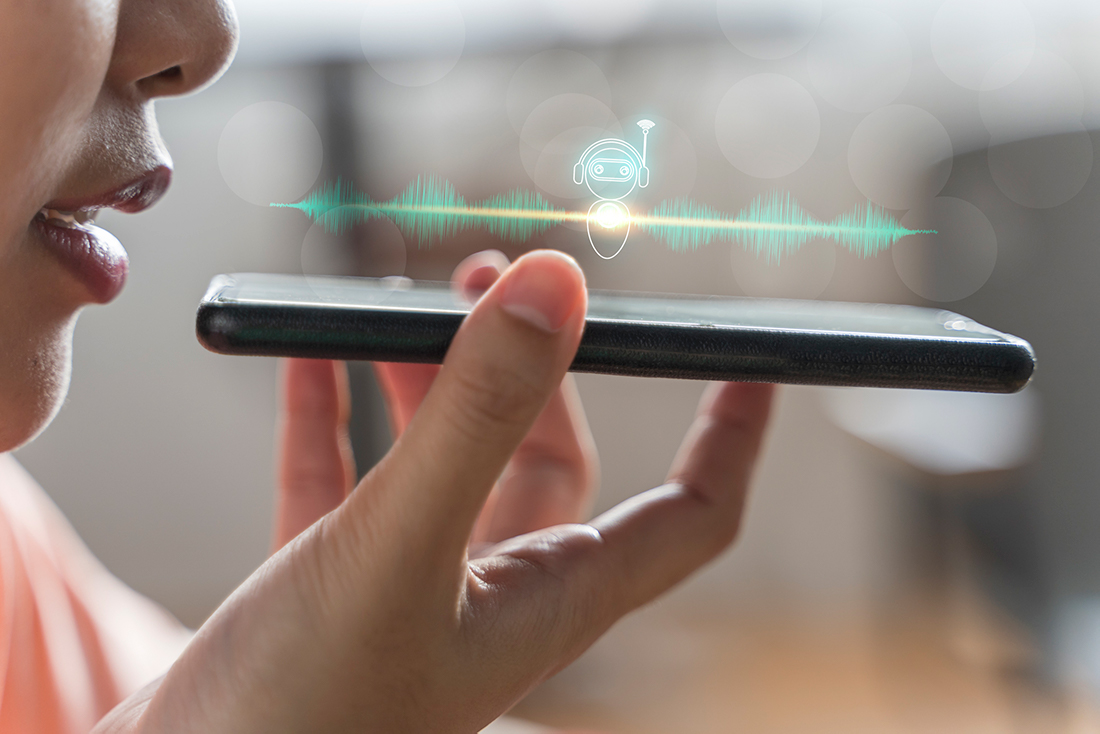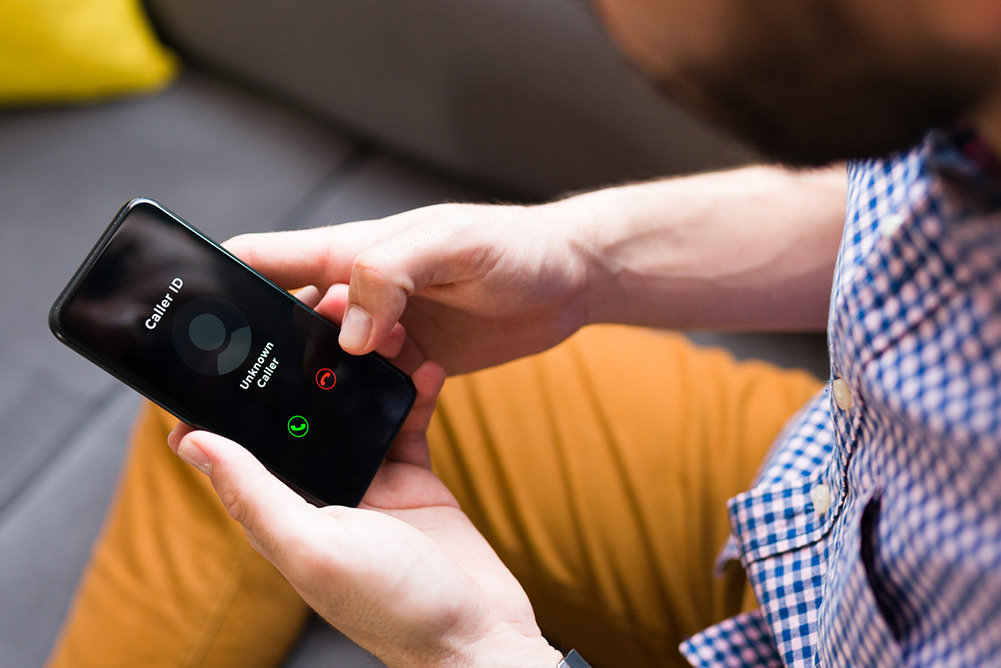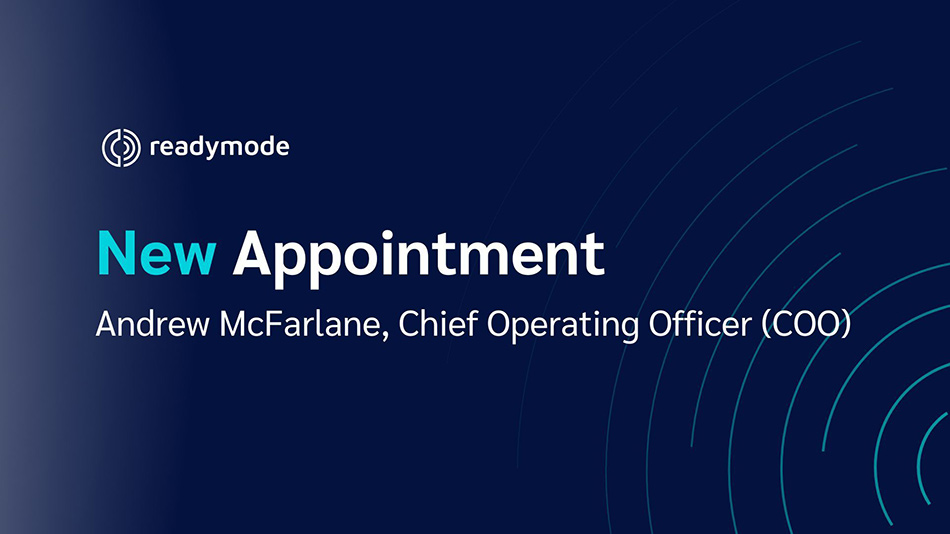Apple’s new iOS 26 call screening feature is reshaping how sales teams connect with prospects. With iPhones holding nearly 58% of the U.S. smartphone market, this update affects the majority of your potential leads.
The new Live Call Screening feature intercepts unknown calls, asks the caller to state their name and reason for calling, and transcribes the message in real time so the recipient can decide whether to answer.
For outbound teams, that’s a major shift, one that could reduce connection rates if reps don’t adapt. Your script, in particular, is now the deciding factor.
At Readymode, we’ve heard from many companies and agents unsure how this change will affect their outreach.
In this article, we’ll explain what’s changed and show you how to craft sales scripts that pass screening and keep your calls connecting.
TL;DR: How iOS 26 Call Screening Affects Cold Calling and How to Adapt
Apple’s iOS 26 call screening now intercepts unknown calls, asks for your name and reason, and displays a live transcript so the recipient can decide whether to answer. For outbound teams, that means your opening line—not your dial—is what gets you through.
How it works:
- Unknown calls trigger a Siri-like prompt.
- Your opener is transcribed before the phone rings.
- The recipient decides whether to accept, ignore, or block.
Your script matters most:
Clearly state your name, company, and reason for calling within five seconds—no filler, no fluff, just clarity and credibility.
Best practices:
- Write short, specific, and verifiable scripts.
- Monitor and maintain your caller ID reputation.
- Register all outbound numbers.
- Focus on high-intent, engaged leads.
- Match your dialing mode to your campaign type.
- Space out follow-ups and stay consistent across channels.
With Readymode’s built-in CRM, dynamic scripting, and Readymode iQ caller ID monitoring, your team can stay compliant, trusted, and connected, even under iOS 26.
What Is iOS 26 Call Screening and How Does It Work?
Apple’s new Manage Unwanted Calls system in iOS 26 adds a layer of intelligence between you and your prospect. When you call someone who hasn’t saved your number, their iPhone automatically answers with a Siri-like voice assistant that says:
“Please say your name and why you’re calling.”
The system then transcribes your response in real time and displays it on the recipient’s screen so they can decide whether to accept, decline, or ignore the call.
This feature extends beyond the Phone app. It’s also integrated into FaceTime and Messages, helping users filter unknown or unwanted communication across channels.
Apple pairs this with other privacy tools, such as Screen New Senders (which filters texts from unknown numbers) and Live Translation for real-time multilingual communication in Phone and FaceTime.
It’s worth noting that, as of now, call screening isn’t automatically active. iPhone users must manually enable it in their settings, so not all prospects will have screening turned on right away.
The update is available on iPhone 12 and later, with certain features varying by language and region.
Step-by-Step: What Happens During Screening
- You place a call to an iPhone user with call screening enabled.
- The system prompts: “Please say your name and why you’re calling.”
- Your spoken message is transcribed live on the recipient’s screen.
- The recipient can accept, decline, or ignore the call.
- If ignored, you can still leave a voicemail, but your message or number may be filtered depending on their settings.
Because your first words are now transcribed before the phone even rings, your opening line is everything. Clarity, brevity, and authenticity can make the difference between getting through—or getting screened out.
Wait, Does This Mean Cold Calling Is Dead?
Not really. Apple’s iOS 26 update doesn’t kill cold calling. It changes how you call, not whether you can reach people.
We’ve seen similar shifts before. When Android call screening and carrier-level spam filters rolled out, many predicted the end of phone outreach. Instead, sales teams adapted with better data hygiene, smarter scripts, and stronger compliance, and still connected with qualified leads.
The same is likely to happen here. The key difference now is that your first impression happens before the phone rings. Calls that sound robotic, irrelevant, or spammy will be filtered out. But when your caller ID is verified, your message is clear, and your timing is right, people still answer.
This is where Readymode can make all the difference. Tools like Readymode iQ help protect your caller ID reputation, automatically register your numbers, and monitor for spam flags so your calls show up as trusted.
Combined with built-in compliance automations, your team can focus on authentic conversations instead of worrying about blocked calls or screening barriers.
How to Write Effective Scripts to Pass iOS 26 Call Screening
Apple’s iOS 26 call screening feature has made your first few seconds on the phone more important than ever.
When Siri-like voice intelligence intercepts your call and asks for your name, company, and reason for calling, that short intro becomes your new elevator pitch.
Say too little, and you’ll sound like spam. Say too much, and your message gets cut off. The sweet spot? Clarity, brevity, and relevance. Keep it under five seconds and around 12–18 words, focusing on verifiable details the recipient recognizes.
With Readymode’s built-in CRM and dynamic scripting tools, you can automatically pull in contact data like name, quote number, or appointment time, so your reps always sound personal, professional, and compliant.
Here are a few examples of how agents can handle this change.
Screening Prompt → Script Line Matrix
| iPhone Prompt | Example Script Line | Why It Works |
| “Say your name.” | “Hi, it’s Dana Lee…” | Clear, friendly, and human. |
| “Say your company.” | “…from Readymode…” | Builds trust through transparency and brand familiarity. |
| “Say why you’re calling.” | “…about your demo booking for Oct 10.” | Provides a verifiable reason, immediately relevant to the recipient. |
Avoid vague openers like “touching base,” “checking in,” or “special offer.” Instead, use clear, contextual details that show authenticity and purpose.
Scenario-Based Script Kits
Use these as templates, then customize them for your industry, tone, and compliance needs.
1. Cold Outbound
- Screening intro: “Hi, Alex—Dana from Readymode, reaching out after seeing your LinkedIn post about scaling outbound calls.”
- If answered: “We’ve helped teams in [industry] boost connect rates by automating compliance and caller ID reputation—worth a quick chat?”
- Voicemail: “Hi Alex, Dana from Readymode—I saw your LinkedIn post on scaling outbound calls. I’ll send a quick note with details.”
- SMS bridge: “Hi Alex, Dana from Readymode here—saw your LinkedIn post about scaling outbound calls. Can I send over a quick resource?”
2. Warm Follow-Up
- Screening intro: “Hi, Taylor—Jordan from Readymode, about your dialer demo tomorrow.”
- If answered: “Just confirming that 2 PM still works?”
3. Appointment Reschedule
- Screening intro: “Hi, Ravi—Elena from Readymode, about your demo today at 2 PM.”
- If answered: “Would you like to move it to later this week?”
4. Customer Retention/Renewal
- Screening intro: “Hi, Renee—Kai from Readymode, about your renewal on Nov 15.”
- If answered: “Can I confirm your preferred plan for next term?”
5. Support/Ticket Update
- Screening intro: “Hi, Luis—Sam from Readymode, about ticket #7342 you opened Tuesday.”
- If answered: “Issue resolved—can I share the fix?”
6. Reactivation/Past-Due Account
- Screening intro: “Hi, Chris—Dana from Readymode, about your account reactivation for Oct billing.”
- If answered: “Quick minute to update your settings?”
On top of Readymode’s personalization features, Readymode iQ adds another layer of protection by monitoring your caller ID reputation in real time. It helps your team maintain number trust, avoid “Spam Likely” labels, and keep connect rates high.
For iOS-screened or high-intent campaigns, use single line modes (Power or Preview) for more natural, personal outreach. For larger campaigns, Readymode’s Predictive and Progressive modes maintain efficiency without sacrificing connection quality.
Best Practices to Avoid Flagged or Blocked Calls on iOS 26
Apart from your script, passing iOS 26 call screening requires the right systems, pacing, and behaviors behind every call. Follow these best practices to maintain trust, stay compliant, and connect with more real prospects.
1. Monitor Your Caller ID Reputation
With iOS 26’s tighter call screening and spam detection, your caller ID reputation now plays a bigger role than ever. iPhones can combine Apple’s spam database with carrier data to decide whether your call gets screened, labeled, or even silenced.
A single flagged number can tank connection rates across an entire campaign. To stay ahead, use automated monitoring to track how your numbers appear across major carriers and devices.
Tools built into Readymode iQ surface early warning signs like sudden drops in pickup rates or new “Spam Likely” tags, so you can rotate or remediate lines before Apple’s system filters you out.

2. Register Your Numbers
Under iOS 26, unverified numbers face more friction than ever. To protect your outreach, make sure every outbound line is registered through the Free Caller Registry, which authenticates your numbers across major U.S. carriers.
Readymode iQ automates this process behind the scenes by submitting your outbound numbers for registration, tracking their verification status, and updating caller ID records as needed.
This continuous verification helps your numbers appear as trusted business callers, reducing the chance of being filtered, mislabeled, or silenced by Apple’s call screening system.
3. Prioritize High-Intent Leads
Apple’s iOS 26 screening algorithm looks for trust signals, including how often recipients engage with or block your calls. Cold or purchased lists are far more likely to trigger Apple’s and carriers’ spam filters, sending your calls straight to voicemail or the “Unknown Callers” list.
To keep pickup rates high, focus on leads who’ve recently engaged with your brand or explicitly opted in to be contacted. Built-in lead management tools in Readymode’s CRM make this easy by automatically surfacing high-intent prospects and helping your team focus outreach where it’s most likely to convert and least likely to be screened.
4. Match Dialing Mode to Campaign Type
Under iOS 26, how you dial can be just as important as what you say. Because Apple’s screening listens for your opening words before a call connects, single line modes like Power or Preview give reps full control to speak naturally and respond immediately, making them ideal for iOS-screened or high-intent campaigns.
Readymode includes four diverse dialing modes, so teams can adapt quickly to both screened and unscreened environments.
5. Manage Call Cadence and Frequency
With iOS 26’s new screening rules, aggressive or repetitive dialing patterns can raise red flags faster than ever. If you call the same number multiple times within a short window, iPhone’s “Manage Unwanted Calls” system may automatically silence or filter your future attempts.
To stay visible without crossing into spam territory, space out your follow-ups, vary your call times, and mix in other touchpoints like SMS or email.
Readymode iQ’s built-in cadence management tools make this simple by enabling you to pace outreach, prevent over-dialing, and keep your campaigns compliant across channels.
6. Maintain Message Consistency Across Channels
With iOS 26 filtering both calls and texts from unknown numbers, your outreach needs to sound unified across every touchpoint.
When your voicemail, follow-up SMS, and email all use the same tone and verified details like your name, company, and reason for contact, it signals authenticity to both the recipient and carrier algorithms.
Readymode’s CRM and omnichannel integrations make this easy by syncing call notes, SMS, and email history across your outreach tools. That way, every message your prospect sees reinforces trust and continuity, improving both pickup rates and response quality.
Make Your Outbound Calling More Effective With Readymode
Apple’s iOS 26 call screening isn’t the end of outbound calling; it’s a push toward smarter, more transparent outreach. Teams that lead with clear, verifiable scripts and maintain healthy caller IDs will keep connecting. The key is adapting quickly with tools that simplify personalization, compliance, and call management.
With Readymode’s dynamic scripting, CRM integration, and caller ID reputation monitoring in Readymode iQ, your reps can focus on real conversations, not technical hurdles, while staying compliant, confident, and consistently heard.
Ready to future-proof your outreach? Book a demo with Readymode.
Frequently Asked Questions (FAQ)
1. Can businesses turn off iOS 26 call screening when calling customers?
No. Call screening is controlled by the iPhone user, not the caller. Businesses can’t bypass or disable it. The best way to ensure your calls get through is to use verified numbers, clear identification, and trusted caller ID practices.
2. Does iOS 26 call screening affect business lines or toll-free numbers?
Yes. Even toll-free or business numbers can be screened if they’re not recognized by the user or carrier. Registered, verified numbers with consistent calling patterns are less likely to be filtered or silenced.
3. How can I tell if my calls are being screened or blocked on iPhones?
If your connect rates drop suddenly or calls go straight to voicemail without ringing, your number might be flagged or screened. Readymode iQ helps detect these trends early by monitoring call outcomes and flagging numbers that show signs of filtering.
4. Does iOS 26 screen text messages, too?
Yes. The “Screen New Senders” feature filters texts from unknown numbers into a separate inbox, and notifications may be silenced. This makes follow-up SMS personalization and consistency with your phone outreach even more important.
5. Is iOS 26 call screening available outside the U.S.?
Partially. Apple’s documentation notes that availability depends on region and language. The feature is currently supported on iPhone 12 and later models in select regions, including the United States and Canada, with English-language support rolling out first.
6. What’s the best dialing mode for calling iPhones with screening enabled?
Single line modes like Power or Preview help ensure reps can respond naturally to Apple’s prompts and connect personally.
7. How can my business stay compliant while calling screened iPhones?
Always include your name, company, and purpose for calling. Avoid deceptive or vague language, and follow TCPA and DNC guidelines. Readymode includes compliance automations that enable you to enforce calling hours, consent tracking, and proper pacing.
8. Does iOS 26 call screening use AI or Siri to filter calls?
Yes. The feature uses a Siri-powered assistant that asks for your name and reason for calling, then transcribes your words for the recipient to review. While it doesn’t “judge” your intent, poor wording can make you look like spam.
9. What’s the difference between iOS 26’s screening and carrier spam filters?
Carrier spam filters operate at the network level, while Apple’s call screening happens on the device itself. Even if a carrier approves your call, Apple’s on-device screening can still intercept it if you’re an unknown number.
10. How can Readymode help me adapt to iOS 26 call screening?
Readymode combines caller ID monitoring (via Readymode iQ), automated number registration, dynamic scripting, and CRM integration, so every rep’s opener sounds credible, personal, and compliant. Together, these tools help ensure your calls reach the right people and your message gets heard.
Jawad Khan
Jawad is a seasoned content marketer and freelance technology writer featured in some of the world's leading digital marketing, e-commerce, and software related publications. As an expert contributor, Jawad has written for startups and enterprises, including Fortune 500 companies, across various tech verticals.








